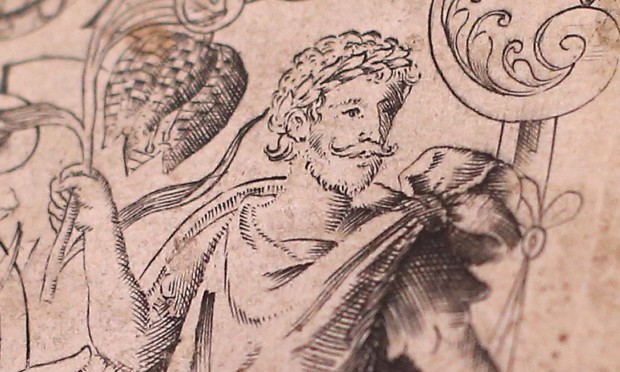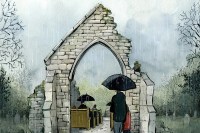Professor Stanley Wells writes that the newly identified picture of Shakespeare on the title page of Gerard’s Herball (1597) is ‘obviously not Shakespeare’ but neither he, nor Mark Griffiths, the botanist who made this discovery, have fully understood why it is obviously Shakespeare. That the figure is a poet is undisputed. In his right hand he holds a Narcissus lily (snakeshead fritillary) which is the flower that grew from the spilled blood of Adonis in Shakespeare’s Venus and Adonis (1593). In his other hand he holds a cob of ‘Turkey Corne’ (which we call ‘maize’ of ‘sweet corn’), again representing Adonis who is God of Corn. So just as the engraving shows Lord Burghley garbed as Soloman, so (to his left) we have a living poet, garbed as Adonis who was not only god of corn, but a famous garden lover.
In those days poets were nicknamed after the works they had written – Sydney, for instance, was ‘Astophel’, Watson was ‘Amyntas’, Spenser was ‘Collyn,’ Nashe was ‘Pierce’, Drayton was ‘Rowland’ etc. Three years before the publication of Herball Shakespeare was nicknamed ‘Adon’ by the poet Thomas Edwards in his ‘Envoy to Narcissus.’ Given, as Professor Wells concedes, that Mark Griffiths has persuasively identified the other three figures on the title page as Gerard, Dodoens and Lord Burghley, the identification of the poet holding the symbols of Adonis can only be ‘ADON’ who is indisputably Shakespeare, the author of the poem Venus and Adonis, so popular that it had already run to three editions by 1597. It should also be noted that the Narcissus lily grows out of Adonis’s blood only in Shakespeare, all other variations of the Greek myth make it an anemone.
This leaves only one important question unanswered. How did Shakespeare manage to enter the circle of Gerard and the service of Lord Burghley without leaving a trace until now?






Comments